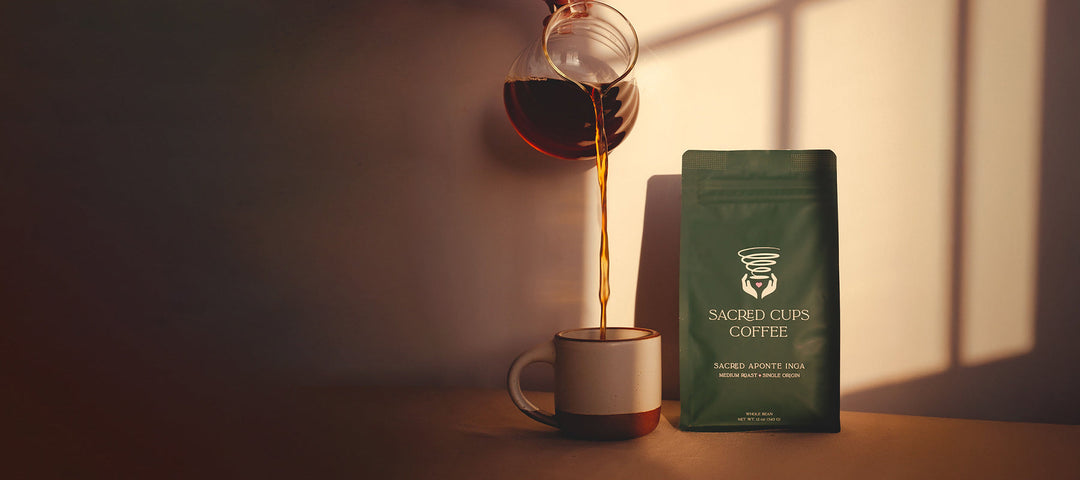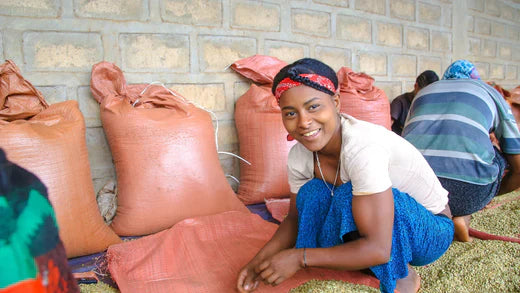Which is the better option in the battle between arabica vs. robusta coffee?
It's not an easy question to answer, especially when considering factors like coffee and chlorogenic acid benefits, as coffee is much more complex than people think. To begin the discussion, let's trace coffee's origins to a genus of plants known as Coffea. While experts estimate there are anywhere from 25 to 100 different species of coffee plants, only two are widely commercially available currently – Coffea arabica and Coffea canephora, which is referred to as robusta and in Brazil is called conilon. Although they are slightly different genetically, both C. canephora types are internationally traded as the commodity robusta, so most people lump all C. canephora together under the term robusta. For many consumers, exploring options like premium ground coffee helps make the distinction between these species even more meaningful. Is one of these species better for you? Let's look into the topic further.
This article will explore the differences between arabica and robusta beans, give you a better understanding of why we currently focus on 100% Arabica beans and the choices we may have with robusta beans in the future.
Arabica vs. Robusta Coffee Beans: What Are They?
Before we discuss the specifics of arabica vs. robusta coffee, we need to understand the key characteristics that separate the two as species. A side note: We call them coffee "beans," but actually, they are the seeds of the fruit of the coffee plant.
What Are Arabica Beans?
Arabica beans come from the Coffea arabica plant and are widely believed to be the first coffee species ever to be cultivated. The irony is that Coffea arabica is a descendant of Coffea canephora and another species (C. eugenioides). At the time of writing this article, arabica coffee beans make up approximately 60% of all global coffee production. For many health-conscious consumers, the preferred way to enjoy this variety is with organic coffee beans, which align with both quality and wellness goals. They originate from Ethiopia but are now grown worldwide wherever conditions allow, which is roughly closer to the equator, between the tropics of Capricorn and Cancer and generally above 3000 feet. However, they are also commercially grown from 1500 to 6000 feet above sea level. Arabica coffee plants are more fragile than robusta, and to thrive, they must be grown with sufficient moisture, nutrient-dense soil and a balance of sun and shade. That said, "shade-grown" arabica is more desirable because the plant takes more time to develop the nutrients and compounds in its seeds.
The two primary cultivars of arabica coffee are Bourbon and Typica, with others like Caturra, Mundo Novo, and Catuai common in many producing countries. There are dozens of others, and coffee research stations worldwide continually develop and test new cultivars [1]. Brazil is by far the leading producer of arabica globally, followed by Colombia, Ethiopia, Honduras, Peru and Guatemala, where options like mold free organic decaf beans are also gaining attention among health-conscious consumers.
These arabica cultivars may produce different taste profiles and have different propensities to develop different levels of nutrients, but this is difficult to determine due to the many variables involved in cultivation. Purity Coffee recently purchased a farm in Colombia to begin to study this very topic in depth.
What Are Robusta Beans?
Robusta beans make up most of the other 40% of all worldwide coffee production. The two most popular varieties are Erecta and Nganda. Robusta is a stouter plant about twice the size of arabica. It is generally more resistant to diseases and pests and produces coffee beans optimally at lower elevations and higher humidity (0 to 3000 feet, although it can be grown higher). One of the best things about the robusta coffee plant is its resiliency. It can be grown at low altitudes and is more resistant to pests and diseases, partly because of its higher caffeine content. Caffeine is actually a natural pesticide that wards off damaging insects. Vietnam, Brazil, Indonesia, Uganda and India are the leading global producers of robusta. However, this species is native to West Africa and is still grown all along the Ivory Coast and West Africa.
How Do Arabica & Robusta Coffee Taste?
When comparing arabica to robusta coffee in terms of taste, we need to look at the chemical composition and what sensory attributes relate to those compounds. Even minor differences in chemical compounds and minerals present may produce considerable changes in the sensory characteristics of different coffees. Arabica beans contain more desirable organic compounds compared to robusta, such as these (taken from The Coffee Guide, 4th Ed., p. 174):
- More sugars (arabica 6%-9%, robusta 3%-7%). Although most people don't think of coffee as "sweet," while roasting, a number of changes involving the sugars impact the final flavors. In other words, higher sugars equate, in general, to more flavorful results. For example, sugars caramelize with different qualities, resembling maple or honey notes, depending on other compounds in the coffee.
- More lipids (arabica 15%-17%, robusta 10%-12%). Lipids impact how the coffee feels in your mouth, with more lipids giving the impression of a "richer" coffee and lingering aftertaste.
- Lower caffeine content (arabica 0.8%–1.6%, robusta 1.5%–2.5% and higher). Caffeine is a bitter compound, and most people are quite sensitive to bitterness, finding bitter coffees less pleasant than others.
Generally speaking, high-quality arabica can be rich, sweet, incredibly aromatic and feature flavor notes of fruits, herbs, spices, flowers, chocolates, nuts and more. On the other hand, robusta beans can taste overwhelmingly bitter, primarily due to the higher caffeine content and lower sugar content, making them seem "flat" or papery. Of course, there are some very high-quality, interesting robustas, which may be better than very low-quality arabicas. Still, most people would find arabicas more pleasant for the most part.
In terms of how arabica vs. robusta coffee tastes, arabica overall is the clear winner. How does this relate to health, though?
Robusta vs. Arabica Coffee Benefits: Health
We get a common question from customers about our organic whole bean coffee: "Is Arabica coffee good for you?" Coffee is a rich concoction of compounds, some of which come from the bean itself, while others come from changes during the roasting process. But even beyond that, when it comes to the health benefits of arabica vs. robusta coffee, arabica edges out robusta because of the taste. With the many health benefits of both types of coffee, people are more likely to choose to drink several cups of whichever tastes better -- and arabica is a delicious tasting beverage that is a pleasure to drink. A coffee that goes undrunk will not benefit the health of anyone.
However, let's look at the score comparing the main health compounds:
- Chlorogenic Acid: Chlorogenic acid (CGA) is an antioxidant that has been shown to have numerous positive health effects [2, 3]. Robusta coffee, in general, contains higher levels of CGA than arabica, although high-quality arabicas can have a CGA content that rivals common robusta. Despite being "acids," CGA tastes more bitter and astringent than sour, so although more CGA means more antioxidants, it also means more bitter astringency in the cup.
- Trigonelline: Trigonelline is an alkaloid and may be beneficial in protecting the liver and heart and treating hypercholesterolemia, hyperglycemia, and central nervous system disorders [4]. Arabica, in general, has higher levels of trigonelline than robusta. During roasting, trigonelline breaks down and helps form niacin, a B-vitamin.
- Tocopherols (vitamin E): These are higher in arabica, and during roasting, those that do exist in robusta tend to break down more during roasting [2].
- Caffeine: As noted before, robusta beans are higher in caffeine, which can have health benefits. As an adenosine receptor antagonist, there is evidence that caffeine reduces pain. Preclinical studies also suggest caffeine provides cognitive protection on tests across many cognitive domains, such as spatial learning and memory. However, everyone has a unique tolerance to caffeine. Factors such as genetics, body chemistry and caffeine-consuming habits indicate whether someone is a "fast metabolizer" or "slow metabolizer" of caffeine.
Those are the main beneficial compounds commonly cited in the scientific literature. Instead of choosing one or the other coffee, naturally, there is an option to create blends of the two species. This, if done well, would mitigate the unpleasant flavors while providing additional health benefits.
However, there are several other factors to consider for health. The first one is in terms of certified organic production. Even though robusta beans are more resistant to pests and diseases and thus need less chemical intervention, there is no way to verify without a 3rd party certification that the coffee follows organic practices throughout the entire chain of custody of the coffee. We have found it very difficult to find a certified robusta to evaluate. How widespread are insecticides and chemical fertilizers in robusta production? This is an area of active research for which we do not have a clear answer. However, we know that becoming certified organic combined with lab testing is the way to ensure the purity of the coffee.
Also, the growing conditions of robusta beans lend themselves naturally to locations with more heat and moisture, which is conducive to the growth of microorganisms or molds that can produce mycotoxins. Food safety is as much a part of healthiness as other aspects inherent in coffee. Robustas contain higher levels in more significant quantities of mycotoxins than arabicas, and the only way to avoid these is to source conscientiously and lab test samples [3].
Experience the Arabica Coffee Benefits for Yourself with Purity Coffee
Here at Purity Coffee, everything we do stems from one goal: To improve the world's health through coffee. We seek to produce the highest-quality health-based coffee on the market naturally without additives. Of course, that all starts with finding the healthiest coffee beans worldwide. Purity organic whole bean coffee comes from 100% arabica beans, sustainably sourced from farms in Colombia, Nicaragua and Honduras, and we are also looking at other origins. Each season, we lab-test each shipment to ensure the coffees meet or exceed Purity's standards — and that you're able to receive all the positive health benefits coffee has to offer.
We're still seeking the "unicorn" of a great tasting, certified organic, contaminant-free robusta to see if there might be a way to take advantage of the higher caffeine or CGA. Unfortunately, we have yet to find one that meets our standards.
View our entire selection of specialty-grade, 100% arabica organic whole bean coffee today. We even offer single-serve coffee pods for all you Keurig lovers, made from the same healthy coffee beans as our whole bean blends. If you have any questions about our coffee, feel free to contact us at any time. Our team of coffee experts is always standing by.
- https://varieties.worldcoffeeresearch.org
- https://www.ncbi.nlm.nih.gov/pmc/articles/PMC4154672/
- https://pubmed.ncbi.nlm.nih.gov/29474816/
- https://www.tandfonline.com/doi/abs/10.1080/19390211.2017.1329244
- https://www.ncbi.nlm.nih.gov/pmc/articles/PMC3766985/
- Coffee: Emerging Health Effects and Disease Prevention, First Edition. Edited by Yi-Fang Chu. 2012 John Wiley & Sons, Inc. Published 2012 by Blackwell Publishing Ltd. Chapter 2, Coffee Constituents, Farah A.
1 comment











Wow! This article was very informative and well written. Makes me want to try your coffee! The part about not getting health benefits from robusta if you don’t drink it was pretty silly though (and funny). 😂
Leave a comment